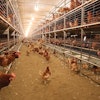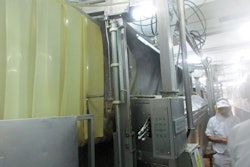
After issuing a profit warning in September, Astral Foods has recently updated the likely range for shareholder earnings.
In its latest advice to the South African Stock Exchange, the company indicated earning per share will be between 12% and 15% below the previous year.
For earning per share, this equates to a decrease of 1.99-2.82 rand (ZAR; US$0.12-0.18) at ZAR13.77-14.60. In 2019, the figure was ZAR1.659. Headline earnings per share are forecast to be in the range ZAR13.89-14.73. This would represent a decline of ZAR2.01-2.85 from the previous year’s ZAR16.74.
According to Astral Foods, the announcement is based on financial information that has yet to be signed off by the firm’s auditor. Audited results for the year ending September 30 are scheduled for official release in two weeks’ time.
In September’s announcement, Astral Foods’ shareholders were warned that earnings could be reduced by as much as 25% year-on-year.
More on Astral Foods
Earlier last month, Astral Foods announced the resignation of Andrew Crocker as Executive Director, with effect from the end of January 2021. The move follows Crocker’s decision to emigrate from South Africa.
According to the Top Companies database from WATT Poultry, Astral Foods holds joint first place as the leading poultry meat producer in Africa. The firm’s annual output is 260 million birds.
Concentration in South Africa’s poultry meat sector
The country’s poultry meat industry is highly concentrated. Small-scale producers contribute only around 10% of South African poultry meat production, according to the USDA Foreign Agricultural Service (FAS). The remaining 90% is supplied by large commercial companies. Of these, just eight account for more than 70% of the total — and Astral Foods is among the largest players.
Year-on-year, South African broiler production is forecast to rise by 4% in 2021, according to FAS. This would take output from the estimate for 2020 of 1.51 million metric tons (mmt) to 1.57mmt. The increase is driven by the country’s exceptional corn (maize) harvest, which is expected to lead to lower poultry feed costs, as well as lower overall costs of production.
Coinciding with the start of the coronavirus (COVID-19) pandemic, the South African economy entered a recession. As a result, FAS forecasts that national chicken consumption will slip by 1% next year to an estimated 1.88mmt.
Continuing a decline over recent years, the country’s imports of chicken are expected to drop by a further 18% in 2021 to 357,000 metric tons (mt). Main suppliers have been Brazil, the European Union (EU), and the U.S. FAS attributes the reduced reliance on imports to an increase in the most-favored nation (MFN) import duties imposed on bone-in chicken cuts and the boneless chicken cuts, as well as the lowering of domestic production costs, and a weak exchange rate.
Meanwhile, FAS expects South African poultry meat exports to increase slightly again next year to around 51,000mt. Min destinations are neighboring countries in southern Africa.
Encouraging more participation by smallholders
South Africa’s National Agricultural Marketing Council (NAMC) has explored the prospects for smallholders wishing to start a broiler farm in the country. The latest in a series of Smallholder Market Access Trackers, the recently study is based on interviews with around 60 independent chicken producers across the country. Overall, the primary aim of the series is to enable market access for all participants. In this process, it identifies key actions by stakeholders that would allow this to be achieved.
Currently, smallholder participation in the chicken value chain is limited to primary production, according to the NAMC survey. While consumption of chicken is the highest of all meats in South Africa, producers receive the lowest prices. Typically, these producers are female, around 50 years of age, and have at least completed high school education. They rear around 1,100 chickens per cycle. As they are unable to access a slaughterhouse, small-scale producers sell their birds at local market. Here, they are able negotiate a price that tends to be higher than that received by farmers contracted to larger companies.
Based on the study findings, NAMC urges the South African Poultry Association to do more to encourage smallholders to raise production, and to participate in the formal broiler market. One solution the Council suggests is through co-ownership of the value chain. Furthermore, NAMC calls on the government to prioritize smallholders in the institutional market, as well as to provide mobile facilities until access can be given to modern slaughterhouses.
















